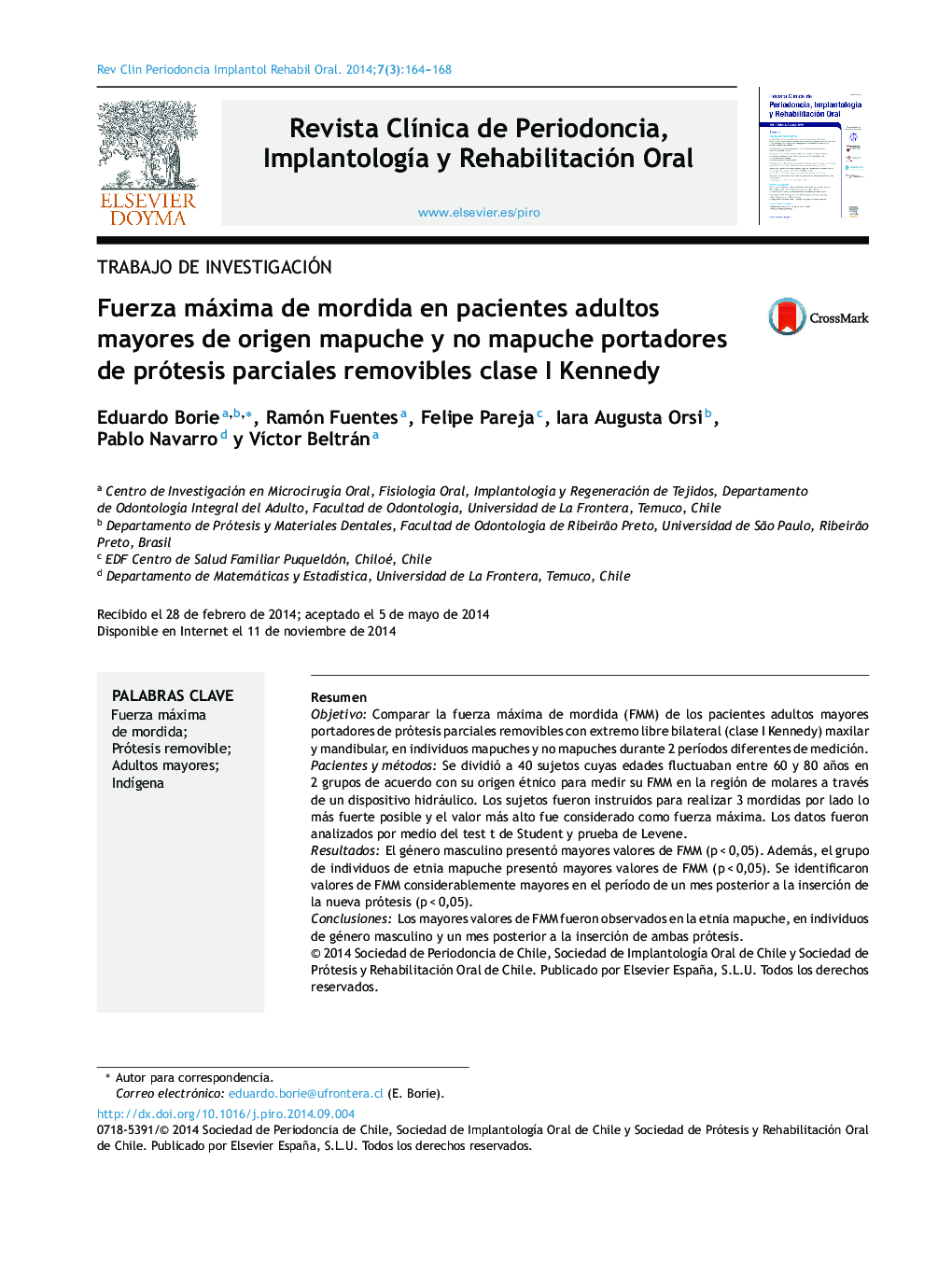| Article ID | Journal | Published Year | Pages | File Type |
|---|---|---|---|---|
| 3172368 | Revista Clínica de Periodoncia, Implantología y Rehabilitación Oral | 2014 | 5 Pages |
ResumenObjetivoComparar la fuerza máxima de mordida (FMM) de los pacientes adultos mayores portadores de prótesis parciales removibles con extremo libre bilateral (clase I Kennedy) maxilar y mandibular, en individuos mapuches y no mapuches durante 2 períodos diferentes de medición.Pacientes y métodosSe dividió a 40 sujetos cuyas edades fluctuaban entre 60 y 80 años en 2 grupos de acuerdo con su origen étnico para medir su FMM en la región de molares a través de un dispositivo hidráulico. Los sujetos fueron instruidos para realizar 3 mordidas por lado lo más fuerte posible y el valor más alto fue considerado como fuerza máxima. Los datos fueron analizados por medio del test t de Student y prueba de Levene.ResultadosEl género masculino presentó mayores valores de FMM (p < 0,05). Además, el grupo de individuos de etnia mapuche presentó mayores valores de FMM (p < 0,05). Se identificaron valores de FMM considerablemente mayores en el período de un mes posterior a la inserción de la nueva prótesis (p < 0,05).ConclusionesLos mayores valores de FMM fueron observados en la etnia mapuche, en individuos de género masculino y un mes posterior a la inserción de ambas prótesis.
ObjectiveTo compare the maximum bite force (FMM), in two different measurement periods, of mapuche and non-mapuche elderly patients with both maxillary and mandibular Kennedy class I removable partial dentures.Patients and methodsA total of 40 subjects with ages ranging between 60 and 80 years were divided into 2 groups according to their ethnic origins to measure FMM in the molar region using a hydraulic device. The subjects were instructed to perform three bites with each side as hard as possible, and the highest value was considered as the maximum force. Data were analyzed by Student's t- test and Levene test.ResultsMale gender showed higher FMM values (p < 0.05). The group of mapuche individuals showed the highest values of FMM (p < 0.05). Finally, considerably higher FMM values were identified at one-month period subsequent to the insertion of the new prosthesis (p < 0.05).ConclusionsThe highest FMM values were observed in patients of mapuche ethnic origin, in male patients, and at one-month period after both prostheses were inserted.
